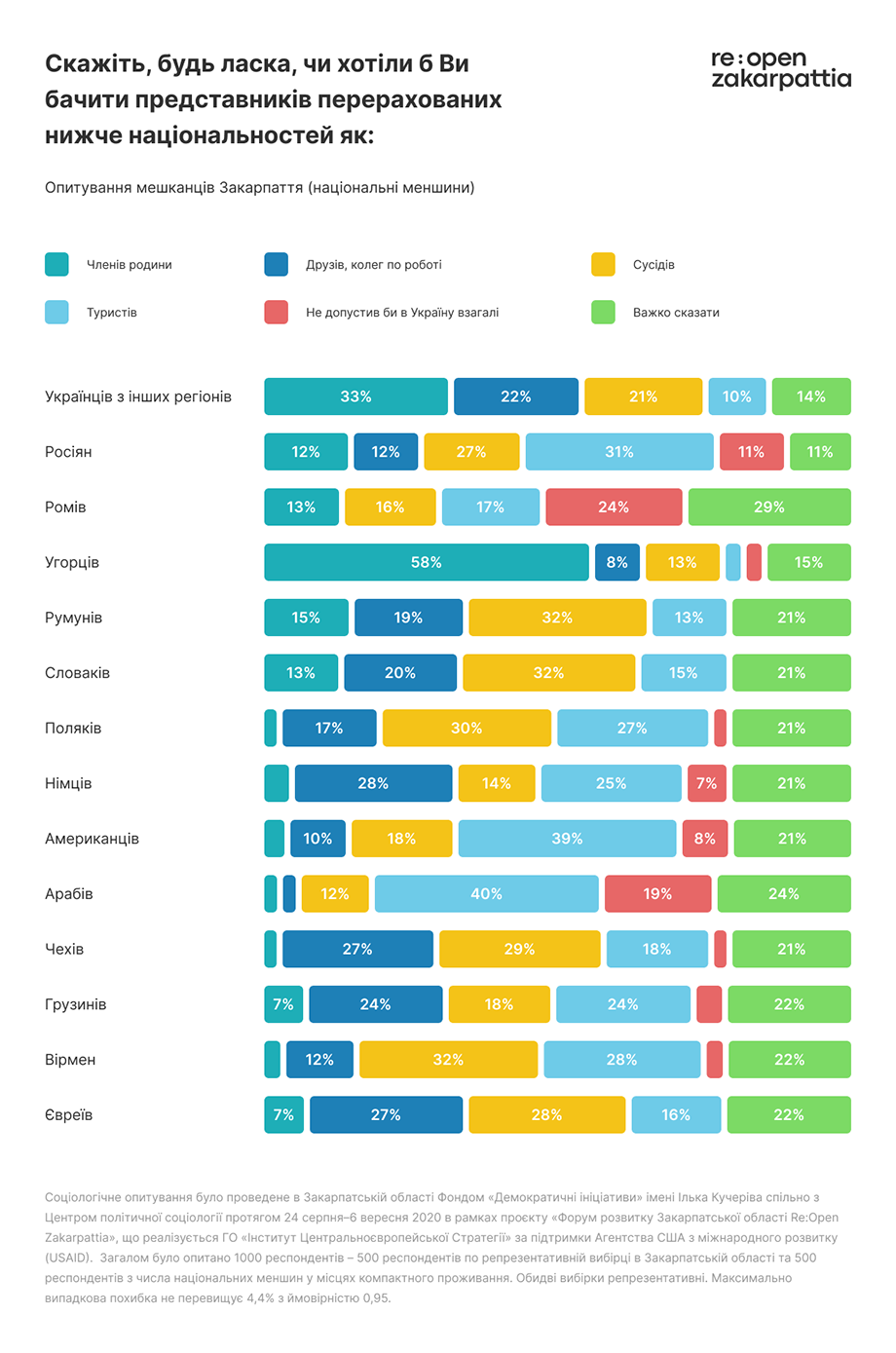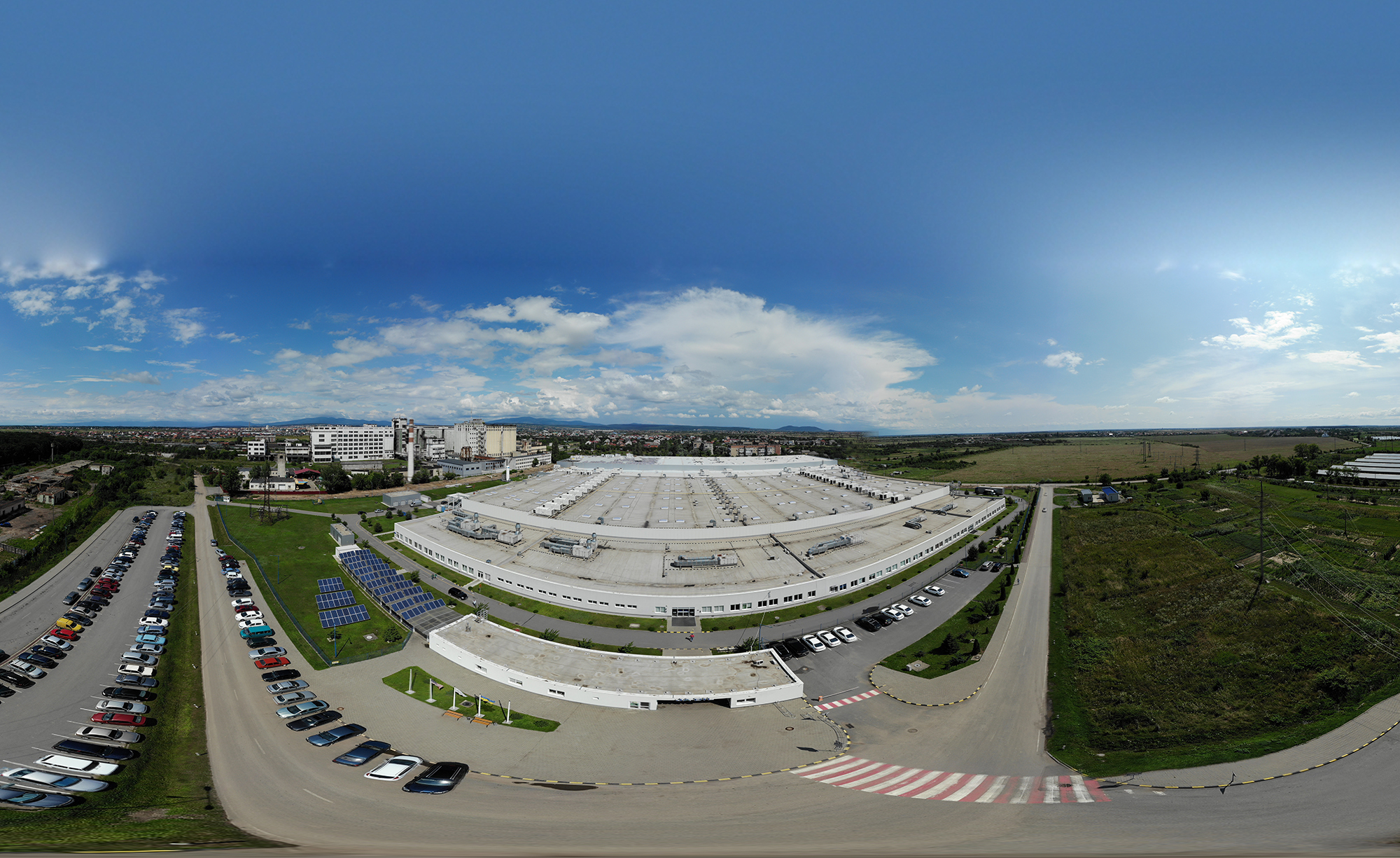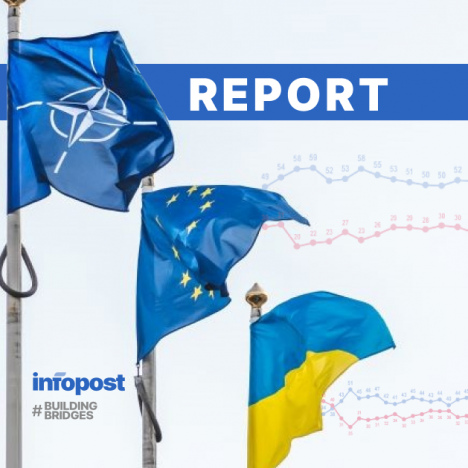Following the results of the last decade the Zakarpattia oblast, which is the westernmost part of Ukraine bordering the country’s EU- and NATO-neighbors, is likened by many to first of all smuggling, separatism and gang warfare.
This is not the whole list of prejudice, bias and stereotypes about Zakarpattia that have been created in the media, public opinion and the establishment. Unfortunately, more often than not they exert quite a damaging influence on important decisions or prevent them from being taken.
Moreover, these stereotypes often serve as a ground for downright misleading news and disinformation, also spread by international intelligence services or their proxies.
Despite the fact that these clichés spuriously seem to be substantiated by some real evidence, it is of crucial importance to do critical thinking and to trust objective information. The truth is – such a situation does not lend itself to simple explanations.
So, what are the most typical myths about Zakarpattia that keep circulating in the media and why is it important to debunk them?

Myth 1. The Zakarpattians support the idea of separatism
Unfortunately, in the past few years this myth has turned into almost a cliché of the region and its inhabitants.
It rests on many stereotypes and manipulations purporting that “Zakarpattia” has never been a historical part of Ukraine or that at the local referendum of 1991, which took place at the same time with the all-Ukrainian one, 78% of Zakarpattians voted for the “self-governing” status of their region.
However, nobody mentions the fact that there was no talk whatsoever of any secession from Ukraine at that time. The fact of the referendum taking place simultaneously with the referendum on declaration of Ukraine’s independence (at which 92,6% of the region’s residents voted “yes”, which exceeded the average percent across the country) is not mentioned, either. Nor does anyone talk about the referendum on ”self-government” having no legal effect.
Small wonder these “details” are omitted, as the topic of “separatism in Zakarpattia” has gained much traction in recent years primarily due to the Russian propaganda. After the occupation of Crimea and Donbas the Kremlin has been spreading the narrative of the westernmost part of Ukraine preparing to follow suit.
It has to be acknowledged, though, that this time the propagandists’ efforts have not been in vain.
Unfortunately, one can nowadays read about the separatism in Zakarpattia (be it of Hungarian, Rusyn or any other nature) in the media, learn about it from Hungarian politicians or even at times from experts. This topic is currently being considered in high places.
This takes place despite the fact that according to all possible public opinion surveys the inhabitants of Zakarpattia do not support the idea of separatism of any kind. Neither the idea of changing the region’s status, nor its secession from Ukraine and the subsequent integration into another state enjoys any support.
Thus, according to the data obtained by the Kyiv International Institute for Sociology (KIIS), in December 2014 an overwhelming 91,5 percent of the Zakarpattians saw their future in the region that is part of unified Ukraine. This percentage is even higher than that shown by the inhabitants of the Lviv oblast!
Although the percentage has insignificantly dropped ever since (not without the detrimental impact of the aforementioned propaganda), the general support of a unified state remains unchanging. According to the research conducted by the KIIS in April 2019, a mere 8% of Zakarpattia’s inhabitants wanted to see Ukraine as a federation (which means they wanted an autonomy for their region) with another 4% expressing their wish to be integrated into Hungary. However, just like the residents of the other regions of Ukraine, the Zakarpattians support the country’s policy towards its decentralization. Half of the respondents backed this approach. Instead, only 26% of those surveyed prefer the centralized Ukraine.
According to yet another research carried out by the Foundation of “Democratic initiatives” named after Ilko Kucheriv and the company “Ukrainian Sociology Service) in December 2018 in Zakarpattia, 81% of local residents believe that Zakarpattia has to remain part of unified Ukraine, with 3 backing an autonomy within the federation and 1% supporting the idea of the region’s secession from Ukraine.
However, the most important survey of the public opinion in Zakarpattia was conducted from 24th August until 6 September 2020 by the Foundation of “Democratic Initiatives” named after Ilko Kucheriv in partnership with the Center for Political Sociology within the framework of the project Re:Open Zakarpattia. The survey revealed that a mere 3% of the locals see their region as part of federal Ukraine, with less than 1% opting for Zakarpattia’s independence or its integration into another state.
Unified Ukraine is an unconditional choice of the Zakarpattians notwithstanding the Russian myth.

Myth 2. There is interethnic tension in Zakarpattia with national minorities being against the Ukrainian language.
On January, 16 2021 a new language law came into effect giving the Ukrainian language precedence over other languages in the services sector. No grievance has been filed in the Zakarpattia oblast against the law ever since. This fact has been corroborated by the State Language Protection Commissioner, Taras Kremin.
This runs counter to the quite popular fallacy that representatives of the national minorities residing in the westernmost part of Ukraine (Hungarian, Romanian, Slovak or any other) do not speak Ukrainian and are against its learning or usage.
***This is not to say that there is no issue of the language in the region. However, it has been way too exaggerated.
The statement about “the interethnic tension” does not hold water at all. Little wonder this narrative is mostly spread by Russian sources and the Kremlin itself.
In truth, from the beginning of Russian aggression against Ukraine no ethnic conflict has been registered in Zakarpattia.
Moreover, the inhabitants of the region strive for a multinational and multicultural environment, which they consider a big advantage of the region. According to the survey by the Foundation of “Democratic Initiatives” mentioned above, the Zakarpattians (including representatives of national minorities) would like to have Ukrainians, Slovaks, Hungarians, Romanians and Poles as their relatives, friends and neighbors.


Myth 3. Because of its proximity to the EU, the Zakarpattia oblast has already achieved European standards of living
Unlike the previous myths, this one may be regarded in favor of the region’s residents. However, it still remains a myth.
One would think that the Zakarpattia oblast could be regarded as the region with the most advanced integration into Europe, considering its geographic location in the heart of Europe and its bordering 4 EU- and NATO-members (from North to South – Poland, Slovakia, Hungary and Romania). After all, during its long history the region was part of several European monarchies and republics in the 20th century.
Today many Zakarpattians travel to the EU on business, vacation or to work. Some of them, before the COVID-19 pandemic struck, had also been in the habit of crossing the border to simply have dinner together with their relatives or friends.
However, the European Union is not only about common territory, habits or geographical fact of life. First and foremost, it is about European standards and practices in all areas of life. In this department the Zakarpattia oblast not only trails significantly behind its neighboring counterparts, such as Košice or Prešov regions in Slovakia or the Hungarian region of Szabolcs-Szatmár-Bereg, but it also loses out to many Ukrainian oblasts in terms of key index of Eurointegration.
Thus, according to the latest survey called “The European map of Ukraine”, which was conducted by the respected center “New Europe”, the Zakarpattia oblast has been trailing far behind by many criteria of Eurointegration for the past couple of years:
- In 2019 Zakarpattia came in 8th among 24 regions that were studied, having lost not only to the neighboring Lviv and Ivano-Frankivsk region (which led the pack), but also to the Sumy, Vinnytsia, Odesa, Volyn and Chernivtsi oblasts.
- In 2020 Zakarpattia finished 24th, having thus taken the penultimate place, leaving only the Luhansk oblast behind.

The Zakarpattians, especially local civil servants, have taken to placing an emphasis on the fact that Europe begins in their region. .
If one takes a closer look at what things really look like in the region, then the sobering understanding comes that the region requires lots of development should it want to catch up with other regions of Ukraine. This poses a pressing challenge to the local authorities, elites, experts, public figures and the media.
Myth 4. Everyone is involved in smuggling in Zakarpattia
This is quite an exaggeration. Truth must be told, though, that the Zakarpattian smugglers are known for their sense of belonging, ingenuity, strong influence and a well organized infrastructure that makes them more effective than the logistics for legal export and import from Europe through Zakarpattia.
There are almost daily reports about the apprehension of Zakarpattian smugglers caught red-handed while smuggling cigarettes to the EU, either by carrying over packages of them through unguarded border zones or in trucks through border checkpoints. Not long ago an entire smuggler’s tunnel was revealed by the border patrol. Wagon loads were used to smuggle all sorts of things from or to Slovakia.
At the same time, it is important to remember that not every resident of Zakarpattia deals with smuggling. Furthermore, the region can provide several examples of ultramodern production and cooperation with leading world’s corporations.
Škoda cars and Nespresso coffee machines are assembled in Zakarpattia. Hockey sticks for NHL and almost all of the world’s skis and snowboards are also produced there, being then imported into the EU. Also, Zakarpattia hosts the production of design furniture for Starbucks, carbon details for BMW, Audi, Porsche and Mercedes cars, furniture for IKEA. Apart from manual force, the plants are also deploying robots.

More on this you can read in a separate research “How foreign investment works in Zakarpattia and why this Ukraine’s region is capable of more”.
Myth 5. Zakarpattia is mainly comprised of ethnic Hungarians. Hungary controls the region and is intent on taking control of it.
In view of increasing tensions between Ukraine and Hungary that have been marred the two country’s relations for several years, Zakarpattia is often mentioned in the context of these tensions. This is understandable, since effectively the whole Hungarian minority resides in the region for the past 1000 years. The status of this minority is the main subject of Ukrainian-Hungarian feuds.
Such attention to the region forms an erroneous impression of Zakarpattia that has nothing to do with reality.
It is widely stated that Hungary is a few steps short of exerting a full political and financial control over Zakarpattia. The story also has it that most of the locals are made up of Hungarians that have been in possession of Hungarian passports for quite a long time. It is for this reason that the Hungarians, according to such hearsay, do not conceive of themselves as citizens of Ukraine.
It is important to first debunk these myths and stereotypes, the more so since it is easy to do with the help of numbers.
According to the last census held in Ukraine in 2011, 151 thousand Hungarians were residing in the Zakarpattia oblast, which constituted 12% of the whole oblast’s population.
In 2017 under the auspices of the Hungarian Academy of Science, Hungarian researchers made an attempt to count the number of the Hungarians living in Zakarpattia. According to their findings, the Hungarian minority in the region lost 28 thousand of its members due to emigration.
Therefore, the number of Hungarians living in the region dwindled to 10%.
Unfortunately, there is every reason to believe that the Hungarian community of Zakarpattia has shrunk even more after 4 years.
Another important and telling figure is the number of Hungarian passports issued in Ukraine. Starting from 2011 Hungary has been issuing passports for ethnic Hungarians living in neighboring countries under the simplified procedure. According to the latest public data, as of 2015, 124 thousand Ukrainians have submitted applications for Hungarian passports, with 94 thousand having already received one.
In other words, we are now talking of the whole adult population of the Hungarian minority having received Hungarian passports. However, the research conducted by the Foundation of “Democratic Initiatives” attest to the fact that the Zakarpattians receive passports of another country for social and economic reasons, predominantly with a view to finding paid work in the EU without the need to get all the necessary permits and no to pursuing the mythical “integration of the region into Hungary”. The myth regarding the separatist feelings in Zakarpattia has been debunked above.
In the context of the official Budapest’s attention (also of financial nature) to Zakarpattia, it can really be felt. As the Hungarian Minister of Foreign Affairs, Péter Szijjártó, put it, the Hungarian government has invested over 250 million Euros into the Zakarpattia oblast within the framework of different programs. These funds were almost exclusively spent on social and cultural projects, predominantly in the form of grants to Hungarian teachers and medical workers, humanitarian assistance to the Hungarian minority and the region on the whole (such as ALV devices, vaccines, etc.), repair and reconstruction of churches, kindergartens, schools and hospitals, scholarships, etc.
It is quite important to understand that even such a considerable sum of Hungarian money pales in comparison with the support provided to Zakarpattia by Ukraine. However, such assistance is insufficient, since Zakarpattia’s internal needs are subsidized by 70%.
For instance, last year Kyiv allocated 5 billion UAH (150 million EUR) for road mending alone. If one takes into consideration further expenses on education, medicine, social and economic development as well as funds provided by the State Fund for Regional Development, any speculation on Ukraine not financing Zakarpattia will immediately prove untenable.
However, it does not mean that Ukraine ought to ignore such investment from its neighbors. Furthermore, it is of vital importance to properly accept and use this help, as it may not only serve good relations between neighbors and foster support of the Hungarian community, but also become an additional tool for development and integration into Europe.
* * * * *
This is anything but a long list of myths and stereotypes that have been formed in recent years. To do away with them is very important for this region, for the unity of Ukraine and for its western course.
Dmytro Tuzhanskyi is director of the Institute for Central European Strategy (Ukraine)





